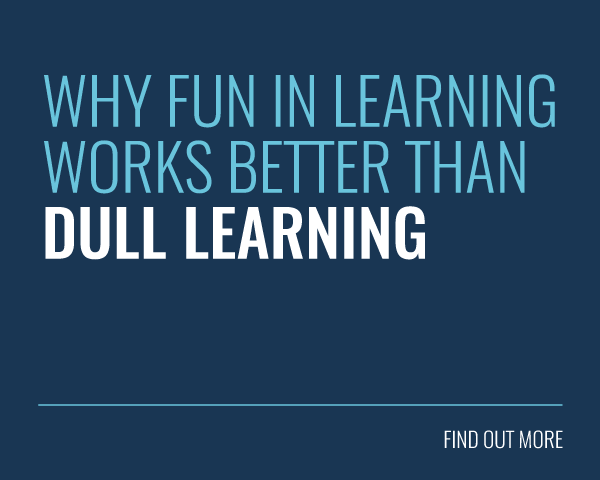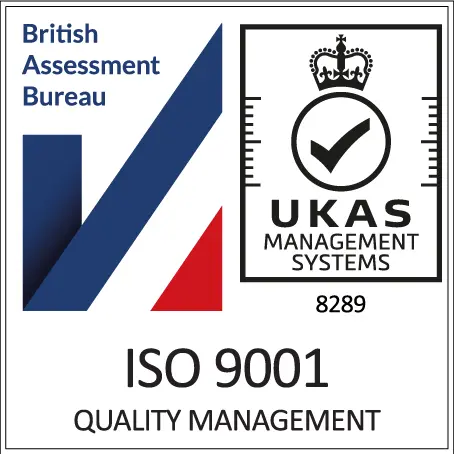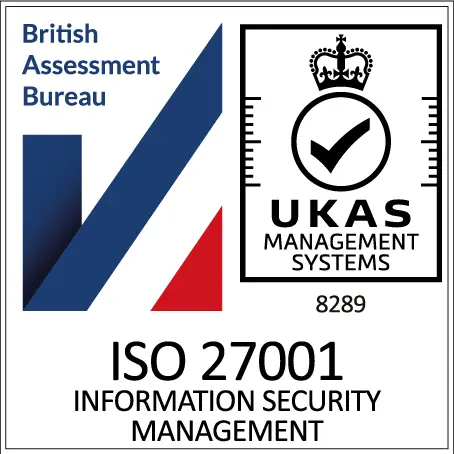
Let’s talk ‘culture’. You know, organizational culture, company culture, corporate culture — whatever you want to call it!
These terms get thrown around like confetti, but what do they mean and why is this nebulous entity so important?
Well, as Simon Sinek puts it, “customers will never love a company [unless] employees love it first.” And if you want your employees to fall head over heels for you, you’ll need a brilliant culture.
Ready to unlock the secret sauce of a truly magnetic workplace? In this article we’ll dissect organizational culture and reveal the ‘lovable’ elements that drive success. In turn, you’ll see why 81% of US executives agree that culture creates competitive advantage.
Culture’s calling! Let’s dive in and build some bridges.
What Does ‘Organizational Culture’ Mean?
Your organizational culture is company’s personality in action. It relates to the day-to-day beliefs and behaviors of a set of employees within the same work environment. It’s ‘the way things are done around here‘. This includes:
- how employees act and engage with the organization
- the values they ascribe to these actions
- their personal goals and how these fit alongside organizational objectives
- and how employees engage with each other at work
It also relates to how well employees understand the company’s mission, vision, and goals. This means that every employee in the organization should know what the company wants to achieve.
This is important, but it’s often overlooked. It’s not enough for employees to do their tasks because “that’s just my job” or “I need to make money somehow“. There needs to be a bigger picture. In fact, 70% of Gen Z workers now rank purpose as more important than pay.
In other words, the route to employee engagement is a two-way street. Your employees need to know that organizational growth will also result in personal growth and professional development.
Examples of Organizational Culture
Every organization has a different culture. For example, some companies are more collaborative and have a team-based culture. This means that people within the organization work together to achieve their goals.
Conversely, some businesses have an individualistic approach, where employees pursue independent goals and targets. And some companies are even more formal. They expect you to come to work in a power suit and stick to your set hours carefully.
Here are some further examples of organizational cultures:
- Some companies are in silos, while others are highly interdependent.
- Many businesses will be sales-focused, others client-focused, others still employee-focused.
- Forward-thinking companies will have a knowledge-sharing culture, empowering employees to proactively pass on their expertise. Others have a centrally driven formal learning strategy.
- Businesses can have dramatically different approaches to technology. Some will be early adopters and innovators, while others will be more cautious.
These examples don’t define the company culture entirely, but they do feed into it and shape it. Just remember, it’s not necessarily the case that one culture is better than another. Instead, each culture is unique and has often been tailored to specific business needs.
Why is a Strong Organizational Culture Important?

A strong corporate culture helps even large organizations to run like a well-oiled machine. In turn, you’ll find it easier to engage your employees and achieve your goals. After all, everyone will have a clear picture of what’s expected of them.
When everyone from top to bottom, nurtures those positive behaviors, your culture blossoms and roots itself deep within the company. This is a long-term investment, but it will pay off. In fact, according to Gallup, a thriving organizational culture can result in:
- 85% net profit growth over five years.
- 50-point employee engagement increase over three years.
- 25% workforce expansion over three years.
Wow! With these numbers in mind, let’s take a look at the specific ways a thriving culture can propel your organization forward.
1. Culture Builds Resilience
The modern workplace moves at pace. In the last half-decade alone, businesses globally have experienced profound change, driven by the adoption of revolutionary technologies like artificial intelligence and the widespread implementation of remote and hybrid work.
A strong organizational culture fosters consistency, serving as an anchor in this dynamic new world. With a great culture, your people maintain the camaraderie and values required to keep them moving towards your shared goals.
This also means they’ll stay resilient when things get tough. Indeed, individuals with a strong connection to their company culture are 62% less likely to feel burnt out at work. After all, they are brought together and galvanized by your company’s singular vision and purpose.
2. Culture Improves Your Work Environment
An organization with a clearly defined culture will always be a more pleasant place to work. Your company culture establishes shared expectations, ensuring everyone understands their role. In turn, this makes for a more enjoyable social and psychological environment.
Failure to achieve this has consequences. Case in point: 59% of workers think their employers are out of touch with the mental health reality of their work environment.
Clear behavioral norms streamline interactions, reduce friction, and create a harmonious workplace. This also helps to remove any uncertainty or ambiguity from their role. This is a critical factor in boosting the psychological well-being of your workforce.
3. Culture Improves Quality of Work
When your culture isn’t as strong, your company values can easily get lost in translation. This places additional demands on managers, who must then vigilantly oversee employee behavior to ensure maximum productivity.
On the other hand, a strong culture has a powerful impact on quality of work. For example, 77% of employees say company culture directly influences their performance and helps them excel. These individuals become self-directed and require less oversight as a result.
There’s no need to use keystroke tools, or to keep a watchful eye on your employees’ Microsoft Teams availability status. You just need a clear set of objectives and goals.
4. Culture Makes Onboarding More Effective
Your organizational culture can also streamline your onboarding process, ensuring new hires readily adopt shared values. From the get-go, it encourages ways of working that cohere to the company’s business objectives and vision as a whole.
In fact, 79% of new hires agree that effective onboarding fast-tracks their cultural integration. Plus, 73% report a significant rise in their engagement levels. Talk about hitting the ground running!
Employees in a company with a good culture are more engaged, motivated to succeed, and display more loyalty. In turn, this will make them less likely to leave the company and more likely to stick around and become an advocate.
5. Culture Breeds Teamwork
One of the best things about a thriving culture is its ability to bring people closer, create a sense of unity, and make everyone feel like they belong. In these environments, employees know where they stand within their teams and they trust everyone else to do a good job.
This also makes people feel like they’re not just cogs in a machine. When your team knows their input counts, that’s when they really shine. In fact, creating a culture based on teamwork, honest feedback, and mutual respect can lead to employees reporting 80% higher emotional wellbeing.
6. Culture Makes Hiring People Easier
Let’s be honest, who doesn’t dream of working somewhere awesome? That ‘wow’ factor culture is what draws people to tech giants like Apple, Google and Meta. And it’s why we’re all secretly scrolling those ‘Great Place to Work‘ lists, right?
Your culture also informs your recruitment process, helping hiring managers to find the perfect match. In fact, a study shows that 98% of recruiters consider cultural fit an important part of their hiring process. Likewise, 77% of employees factor in company culture when making job application decisions.
17 Top Tips For Improving Organizational Culture
We’ve now seen that culture is a competitive weapon, yet most companies are dropping the ball. It’s your employees that suffer as a result. After all, the numbers don’t lie:
- Only 2 in 10 employees feel connected to their company’s culture.
- 84% of employees believe their company needs to improve its culture.
- 90% of executives agree their organizational culture could be enhanced.
- And 15% of employees report working in a ‘toxic workplace’.
Yikes. This just goes to show, creating a lovable culture isn’t easy. Thankfully, there are a number of steps you can take to move the dial. With this in mind, here are 17 surefire tips to help you create the best company culture for your modern employees!
1. Listen to your Employees

First things first, you need to provide your employees with an environment to let their opinion be heard. Listen for ideas, listen to ease conflicts, and listen to help create an even better company culture!
Companies that prioritize employee voices often hold ‘town hall’ or ‘all-hands‘ meetings, encouraging an open dialogue between management and staff. This practice builds trust and helps to secure employee buy-in. The following research highlights why this is crucial:
- 60% of employees report feeling ignored by their manager or employer.
- 74% of employees become more effective when their voices are valued.
- 58% of employees wish their company conducted more engagement surveys.
2. Communication is Key

Similarly, you should strive to effectively communicate your organization’s mission statement, vision, and values. This helps to create the sense of having a shared goal and shifts your employee’s mindset from feeling like they’re just a number to being a valued member of the team.
But don’t let effective communication be a one-sided affair. Seek to encourage active communication across your organization. This increases the strength of employee-employer relationships and can help diffuse conflict. And just look at the impact this can have:
- 74% of employees feel like they’re missing out on company news due to poor internal communication.
- 85% of employees report increased engagement when leaders communicate openly.
- Miscommunication costs US businesses an estimated $1.2 trillion every year.
3. Collaborate Don’t Isolate

Encourage collaboration between employees to reinforce the idea that you are a team. A truly collaborative culture results in a lively exchange of ideas and knowledge. It’s where people and teams are encouraged to speak up, share, and really listen to each other.
In turn, you can wave goodbye to departmental knowledge silos.
- 73% of employees who collaborate at work report performance improvements.
- 64% of employees waste at least three hours a week due to collaboration inefficiencies.
- 41% of team members would consider leaving their jobs if poor collaboration was an issue.
4. Be Transparent

Transparency with your employees is a way of building trust. On the other hand, if you keep things hidden, you’re basically inviting a culture centred around one insidious thought: ‘what are they not telling us?‘. As you can imagine, this is a recipe for disaster.
When employees are trained in a culture of transparency, it creates a cycle of trust that can even extend to customer transactions. It’s a self-sustaining loop of positive interactions.
- 95% of executives agree that organizations have a responsibility to build trust.
- Only 20% of employees strongly agree that they trust their organization’s leadership team.
- 45% of HR leaders rate their organizational culture as low trust.
5. Follow the Leader

Organizational culture needs to be nurtured. And this nurturing needs to happen at the very top of the ladder. Simply put, your leaders need to visibly demonstrate that they buy into their organization’s core beliefs. When they walk the talk, everyone else will follow suit.
- 52% of executives agree that leadership development has the biggest impact on organizational culture.
- 66% of executives see culture as the critical lever for organizational performance.
- A mere 48% of employees rate their company’s leadership as ‘high quality’.
6. Provide Regular Feedback

Employees need regular and balanced feedback if they are to align their performance with your organizational culture. An annual performance review or superficial checkbox exercise just wont cut it.
Your employees need clear goals, regular one-on-ones, and real-time guidance. Seek to praise the behavior that matches your values and develop areas that need improvement. Keep on top of things with regular reporting and you’ll soon be working in tandem!
- 68% of employees who receive accurate and consistent feedback feel fulfilled in their jobs.
- 89% of HR leaders believe peer feedback and regular check-ins enhance organizational culture.
- 80% of employees who receive meaningful feedback are fully engaged.
7. Find Your Epic Meaning

If you want to truly supercharge your organizational culture, then you need to look to our awesome friend Epic Meaning. It’s not enough to ‘buy’ commitment from your employees. For truly satisfying work, they need to believe they’re working towards some higher purpose.
This sense of purpose can take many forms, ranging from sparking positive change, being part of innovation, or serving the wider community. The key is showing your team why their work matters and connecting it to what they care about personally.
- 82% of employees believe it’s important that their company has a purpose (beyond profit).
- Employees who feel a sense of belonging are 6x more likely to be engaged at work.
- 8 in 10 employees agree that learning initiatives add purpose to their work.
8. Get Your Head in the Game

One way to rekindle your company’s culture is by embracing gamification. This approach takes the mechanics that work so well in video games and applies them to your unique context.
For example, why not add game elements to your learning management system? Before long, your employees will be hunting down badges and XP to claim bragging rights over their colleagues on the leaderboard!
This makes for the perfect environment to reinforce your organizational culture. But what do we know? We’re only the #1 providers for a gamified LMS!
- Organizations who implement game mechanics can boost engagement by as much as 48%.
- 72% of employees believe that gamification motivates them to work harder.
- 95% of employees enjoy having gamified elements in their work.
9. Reward Your Employees

Prioritising recognition is essential for creating a positive and productive workplace. You should seek to reward your employees for actions that best represent the organizational culture you’re targeting. That way you’ll reinforce the right behaviors and embed desired values into the fabric of your company.
- 90% of HR managers recognise the critical link between recognition and business outcomes.
- 83.6% of employees agree that recognition affects their workplace motivation levels.
- Recognition can reduce voluntary turnover by as much as 31%.
10. Lay Down a Challenge

Want to show your team you truly value them? Give them room to stretch and take on exciting new challenges and projects. It shows you’re invested in their journey and that kind of support creates deep-rooted loyalty.
Providing challenges also increases job satisfaction as employees gain more confidence in their skills and abilities. And when your team’s skills and confidence grow, you’ll see the benefits too.
- 77% of employees are ready to learn new skills.
- In fact, 74% see training as a matter of personal responsibility.
- Employees who get ongoing development are 2x more likely to say they’ll stay with their company for their whole career.
11. Encourage Social Learning

Your team is your culture’s engine. Giving them the tools to thrive, like a social learning platform, will keep that engine running. These systems help to encourage informal learning and knowledge sharing.
The beauty of social learning is how easily new knowledge gets around. It’s a fantastic way for your team to put their heads together on challenges and share what works best. This kind of collaborative power is a massive boost both for your people and your organization as a whole.
- Social learning approaches have a 75:1 return on investment over traditional web-based training.
- Organizations can boost productivity by up to 35% through social learning tools.
- Social learning approaches can increase course completion rates by 85%.
12. Build Fun Memories & Rituals

Ever heard of the saying “all work and no play makes Jack a dull boy?” Don’t let dull Jacks haunt your workplace. You should take care to ensure your office or remote working space is fun and engaging.
Use games and team-building activities to energise your teams. Celebrate each others’ successes. Hold competitions. Encourage breaks. There’s a lot you can do to create good vibes around your workspace.
- 81% of employees at top-rated companies describe their workplace as ‘fun’.
- Happy employees are, on average, 12% more productive than their peers.
- 79% of employees agree that fun at work is a key driver of productivity.
13. Embody a Flexible Work Culture

Adopting a flexible work culture has been found to improve employee morale and productivity. This requires a forward-thinking approach, championing remote and hybrid working. Your learning and development (L&D) team should also promote online learning and hybrid learning approaches.
Cultures based on mutual trust thrive. By incorporating flexibility and agility in work schedules and patterns, this sends the signal that you trust your employees. In turn, this encourages loyalty, and increases engagement and motivation levels.
- 60% of employees have flexible working arrangements in their current role.
- Flexible work environments increase the number of high performers by 40%.
- 46% of remote workers would consider changing jobs if ordered back to the office.
14. Embrace Diversity & Inclusivity

Nurturing diversity, equity, and inclusion (DEI) in the workplace promotes a culture centered on honoring differences with dignity and respect. This makes everyone feel comfortable and welcome.
To really promote diversity, it isn’t enough to simply acknowledge differences. You also need to recognise the value of each employee, including their unique attributes and individual contributions. Following this, you need to take concrete steps to reduce discrimination and cognitive bias.
- 76% of job seekers agree that diversity is an important consideration when reviewing job offers.
- 75% of executives claim that their DEI investments have had a ‘very positive’ impact on their business.
- Organizations that prioritise DEI are 1.7x more likely to be innovation leaders.
15. Socialize New Starters

If you thought that formal onboarding programmes were enough, then we need to talk! Fully integrating your new employees takes time. Company norms aren’t taught in training sessions. They’re absorbed through everyday interactions between colleagues.
This underscores the crucial role of socialization, where co-workers and supervisors actively shape and encourage newcomers’ integration. After all, in the age of artificial intelligence (AI), real human connection has become even more important.
- 93% of survey respondents feel very connected to their co-workers.
- However, 23% of employees don’t have a close friend at work.
- Friendships in the workplace make you 7x more engaged in your job.
16. Protect Employee Wellbeing

A thriving company culture hinges on happy employees. Prioritise wellbeing, and you’ll build a foundation of trust and support. After all, when employees feel cared for, they’re more likely to care about your goals and objectives.
In turn, they could even become your cultural brand ambassadors, rallying team spirit, and communicating your values to the rest of their team. However, it’s up to you to monitor stress levels, reduce burnout, and protect your team’s mental health.
- Only half (55%) of employees report a high state of wellbeing at work.
- And only 65% of employees agree that their company does enough to support their wellbeing.
- Employee burnout has cost organizations over $322 billion.
17. Build a High-Performance Learning Culture

Behind every successful business is a high-performance learning culture. In fact, top companies are five times more likely to have extensive learning cultures compared to low performers.
To build a high-performance learning culture is to develop employees who are highly engaged and proactive in achieving their development goals. It is also a culture where teams actively take part in knowledge sharing and social learning. Check out our article on the ‘Transformation Curve‘ to get started now!
According to research by Deloitte, organizations with a high-performance learning culture are:
- 92% more likely to innovate.
- 17% more likely to be a market leader.
- And 58% better prepared to meet future challenges.
Final Words
The bedrock of a successful organization is a strong team, powered by a great company culture. This has always been the case, but it’s even more important in the modern workplace. After all, we now have to contend with evolving technology, ever-changing work trends, and increasing uncertainty.
Keeping up isn’t easy, which is why it is no surprise that many companies find it a challenge to create and maintain the right culture. With this in mind, we hope that this article acts like a formula to help you push forward towards organizational success.
All you need to do is create an environment (physical or virtual) where your teams can flourish. With these top tips, you can get started on building the culture of your company’s dreams. It’s time to make Mondays feel a bit less like Mondays. Good luck!
Thanks for reading! If you’ve enjoyed this content, please connect with me here or find more articles here.
Building a thriving organizational culture goes hand-in-hand with supporting modern learners. Discover how to empower your team’s development in our free white paper, ‘Your Guide to Modern Learners‘.










